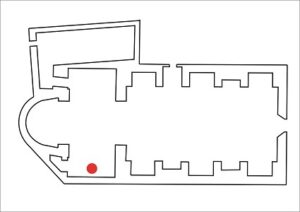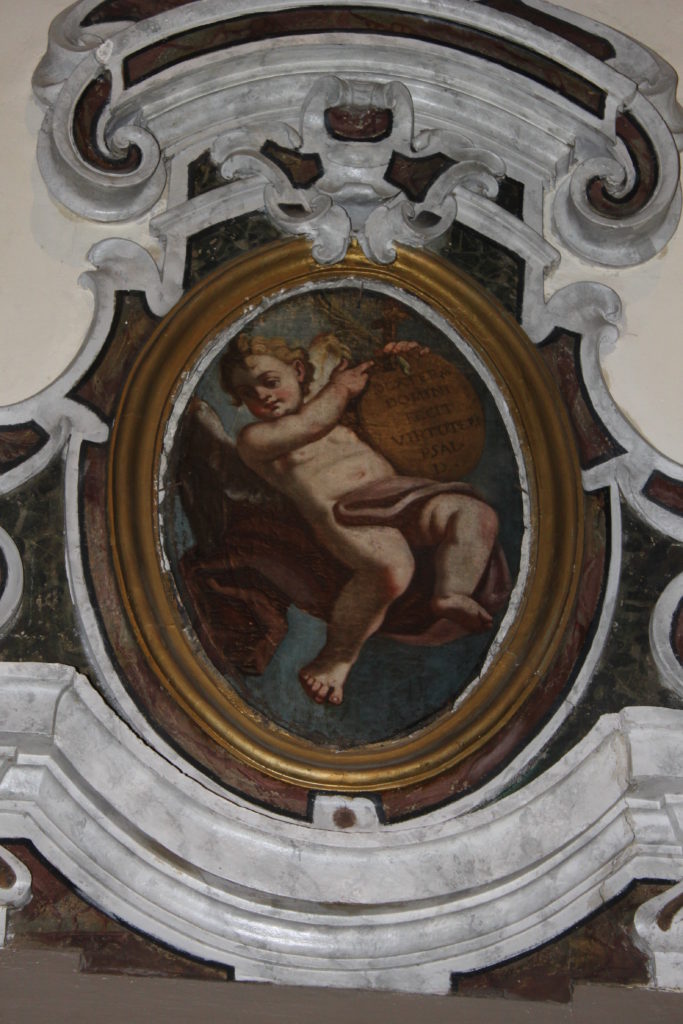Puttino con palma e medaglione


Chiesa di S. Maria Maggiore
Dipinto
Matteo (o Tommaso) Vigilante
Puttino con palma e medaglione
Sec. XVIII (seconda metà)
Olio su tela

Church of S. Maria Maggiore
Painting
Matteo (or Tommaso) Vigilante
Cherub with palm tree and medallion
18th century (second half)
Oil painting on canvas
L’opera fa parte di una serie di quattro ovali, commissionati dall’arciprete Pietro Antonio Perillo, parroco di Grottaminarda dal 1748 al 1796 e promotore della ricostruzione della Chiesa di S. Maria Maggiore.
Tutti e quattro gli ovali rappresentano un puttino e tre di questi sorreggono un medaglione ovale in cui sono riportate citazioni della Bibbia. Le citazioni furono scelte, secondo la tradizione, dallo stesso arciprete Perillo, che attraverso di esse lasciò un messaggio a chi visitava la chiesa, quasi una sorta di testamento spirituale.
In questo ovale il puttino regge, con entrambe le mani, un medaglione con l’iscrizione “dextera Domini fecit virtutem”, un motto preso dal Salmo 117, verso 16 della Vulgata, che tradotto dice: “La destra del Signore ha fatto meraviglie”.
È un chiaro riferimento all’opera fatta dall’arciprete, che confidando nell’aiuto del Signore è riuscito a realizzare il “meraviglioso” tempio monumentale.
The work is part of a series of four ovals, commissioned by the archpriest Pietro Antonio Perillo, parish priest of Grottaminarda from 1748 to 1796 and promoter of the reconstruction of the Church of S. Maria Maggiore.
All four ovals represent a cherub and three of these support an oval medallion in which quotations from the Bible are reported. According to tradition, the quotes were chosen by the archpriest Perillo himself, who through them left a message to those who visited the church, almost a sort of spiritual testament.
In this oval the cherub holds, with both hands, a medallion with the inscription “dextera Domini fecit virtutem“, a motto taken from Psalm 117, verse 16 of the Vulgate, which translated says: “The right hand of the Lord has done wonders“.
It is a clear reference to the work done by the archpriest, who, trusting in the help of the Lord, managed to create the “wonderful” monumental temple.

